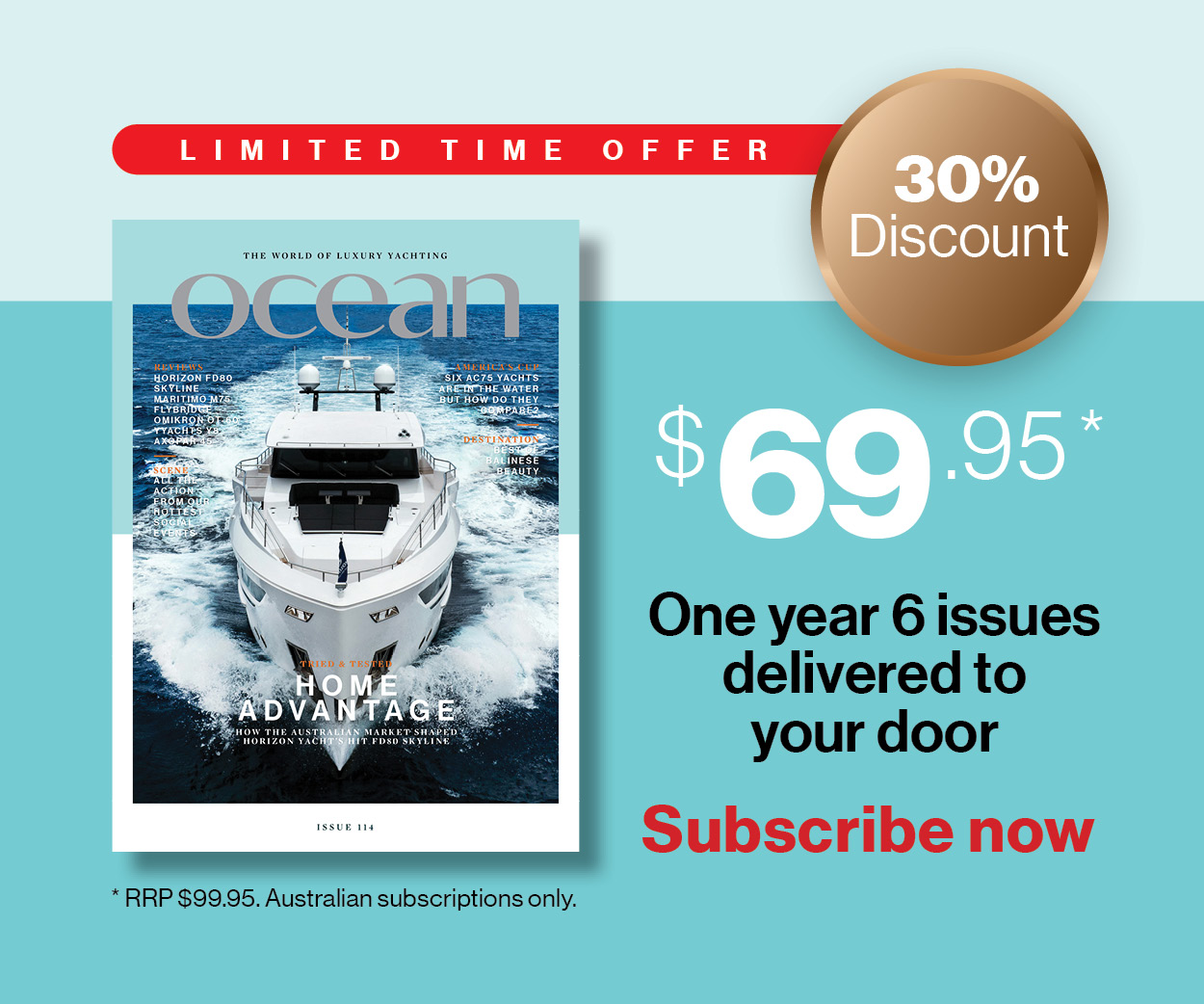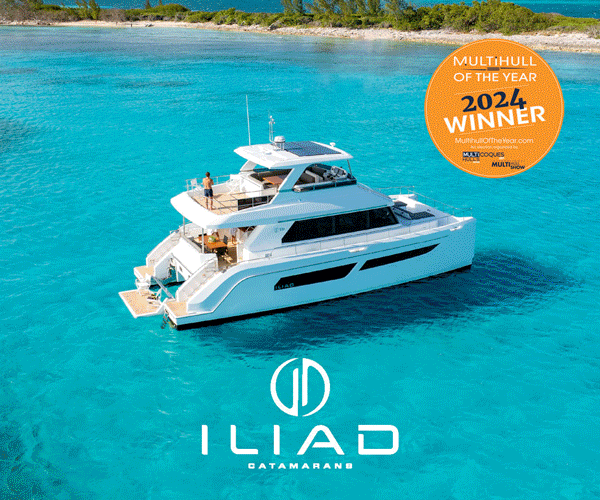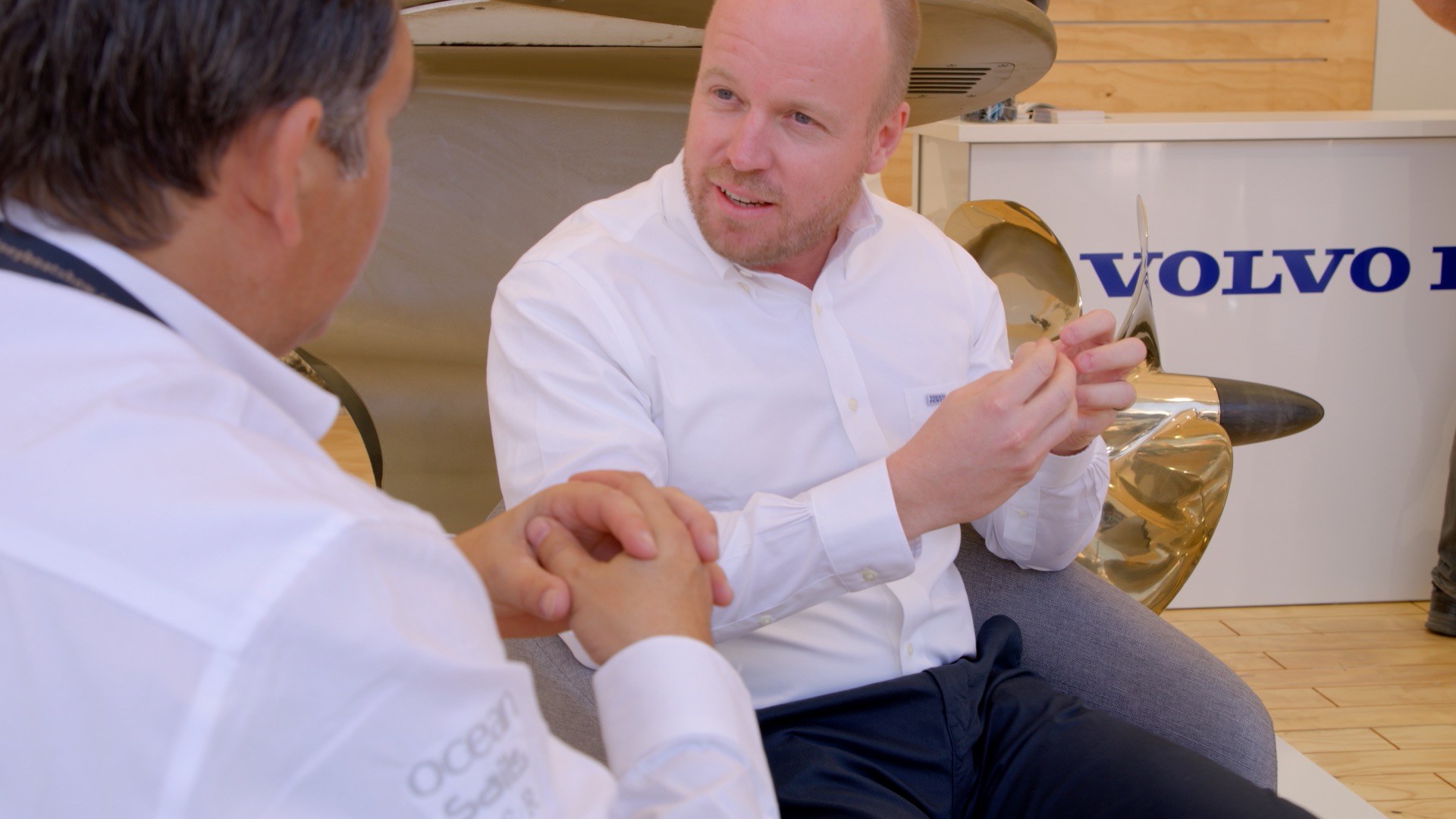Future interface
Volvo Penta is harnessing its resources to push toward hybrid and electric power trains. We spoke to Björn Säljö, head of Volvo Penta Oceania, about the changes coming to a dock near you.
Written by Scott Alle
18 October 2018
There are some pretty exciting things happening at Volvo Penta, the most recent being the self-docking system demonstrated at the Volvo Ocean Race stopover in Gothenburg. What is the technology being used there?
What we are doing right now is investing a lot of resources into developing automation technology. Prototypes of Volvo Penta’s self-docking technology are currently undergoing development trials. The automated docking capability comes due to the onboard electronic vessel control system (EVC), which computes steering and drive calculations in relation to the boat’s actual position and four sensors sited on the intended berth.
How long will it be before the boating public will be able to use self-docking?
It’s about a two- to three-year time span before we see that in full production. We are working with marinas and other stakeholders to make that happen.
What’s been the response to that initial demonstration in Gothenburg?
There’s been an overwhelming response. People appreciate we’re trying to make boating easier. So, we are investing and building up our position in this area.
Unfortunately, the boating industry’s been slow to embrace hybrid technology. Volvo Penta has been working on this for quite a while, though?
Yes. If you have automation on one side, then you definitely have electrification of drivelines as the other big future investment for the industry. And we are pouring in resources to apply the automotive technology in a marine setting.
Isn’t the main challenge in all this the battery? How is Volvo Penta addressing this?
Battery technology is one of the core focus areas. It’s not only the physics; it’s also how you manage energy consumption on board, taking the house supply in one dimension as well as propulsion. So it’s a system approach, taking care of quality, the environment, and safety aspects as well. It’s also not only cell development, but how you manage capabilities, how you make a robust charging system, efficiency, and of course what do we do with them when they wear out.
How long before a hybrid battery system will be operating in a recreational boat?
We are introducing this technology into marine. We will use it first in commercial-marine applications for mass transit, and that is the driver for the move to the recreational market.
Is the technology not yet available to meet the demand?
I think that looking at the last 10 years, it’s been really awesome to see the development in battery technology, and we expect great things in the future as well.
We feel now it is now mature enough to introduce the technology into the marine sector; and we feel it’s viable for the leisure segment.
Future proofing is somewhat of a cliché, but isn’t it about coming up with viable products, and doesn’t that require getting the marinas involved?
We want to engage a larger audience and talk about how are we going to use this application in the marine-leisure environment. What do we require in terms of charging capabilities from the marinas? What infrastructure is required? Those are investments that usually occur over years to get up to a level that is practical, as you are pointing out. That’s the core focus: make it usable, and make it easy to work with.
How far away do you think a zero-emission motor yacht is?
What’s happening now is some of the big cities in Europe have set a date they want to be emission-free, and basically that leads to battery or electric-driven systems, but they still want to have the flexibility of what a boat can do. People still want to have the range; they want to have the speed. The first step will be a hybrid one, and in the commercial space it will be an electric hybrid with a geofence radius from the city centre you can’t get into without turning on the electric drive. It’s in that 2025 scenario Stockholm, Oslo, Gothenburg, and Amsterdam are all working toward this.
What’s driving all this? I assume it’s a substantial R&D program?
That’s very important, and we are leveraging what the Volvo group is developing and how we can use it in the marine space.
What is the coolest bit of this new technology you can talk about?
I think automation and connectivity. Easy Connect is our first solution in getting more in touch and connected with your product. This really excites me; what we can do together with the marinas. Making it simpler to go boating; that is really the core of it. And putting road technology to use in marine; that’s a powerful combination. Docking, for instance, is a hard manoeuvre, and we want to assist the operator as much as possible with that. Then, of course, going cruising, whatever you are doing, it’s about enhancing the experience. I’m a boater, and I like to drive my boat, but definitely in tricky situations, let’s use technology wisely.







